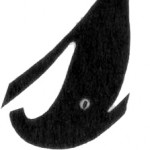Fabric Minimum
-
10 years ago LINK
Paige @eperte
I’m salivating over some delicious boiled wool at Purl Soho and debating whether to buy the full 1.5yds the pattern calls for with an XS. Every o+s/liesl pattern I’ve sewn has had a very generous estimate… I’ve not bought the pattern just yet either and would welcome thoughts/advice 🙂
10 years ago LINK miss_sonja
@miss_sonja
miss_sonja
@miss_sonja
often, the pattern minimum is needed due to width or grain requirments. I’ve learned that the hard way when trying to be frugal with fabric.
But, I haven’t sewn this particular pattern.
10 years ago LINK Sarvi
@Sarvi
Sarvi
@Sarvi
I’m afraid I don’t know either but have run into the same issue as miss_sonja — often you need the allowance to be able fit the pieces properly. Are you looking at a solid, or something patterned? Do you have the pattern already? If you do, you could test it out (not cutting out, just laying down the pieces) against another fabric of the same width.
10 years ago LINKPaige @eperte
I don’t have the pattern yet-debating between digital or printed… Laying it out would have solved my dilemma if I could make any decision. 😛
I’m looking at a solid and have had good luck getting most patterns in a fair bit less yardage than called for, but it doesn’t look like there are many pieces to fiddle with placement. But since an XS-M all call for the same yardage thought id check. I could have sworn I read a thread somewhere in here (years ago!) with a bunch of mamas challenging themselves to get patterns cut from smaller bits of yardage.
10 years ago LINK Nicole
@motherof5
Nicole
@motherof5
The only super safe way to scrimp is to lay out your pattern. The pieces are quite wide so you may well need your yardage.
I think you are looking for the McScrooge thread 🙂
I will have a look for you.10 years ago LINK Nicole
@motherof5
10 years ago LINK
Nicole
@motherof5
10 years ago LINK Lightning McStitch
@LightningMcStitch
Lightning McStitch
@LightningMcStitch
Unless you’re matching plaid it’s a VERY generous fabric suggestion.
I bought the recommended amount, cut a size Large +1″ length and then sent the leftovers to @Nicole
I’m sure there’s enough there for her to cut a S or even M if she’s canny!
Definitely print off the pattern, check the width of your desired fabric and lay it out to measure.
Or just make a matching Forest Path, your call 🙂10 years ago LINKFor what it’s worth, here’s how we determine yardage. This may help you understand a bit about how much you may be able to cut back on required yardage when purchasing fabric. And I know some of you enjoy these behind-the-scenes peeks at our process, so here we go.
But first, a disclaimer. If you read this, think you’re good enough to squeeze out a size with less than the required yardage, and try to do it, you’re on your own. I wish you all the best of luck, but I take no responsibility for your outcomes. OK?
We use a separate module in our grading software to develop the cutting layouts and yardage estimates for each pattern. This is done as pretty much the last step in the pattern development process after testing comments are in and fitting changes are made to the pattern.
This module is a piece of optimization software that uses the graded pattern pieces to develop optimal cutting layouts for each size of the pattern for any fabric width we specify. This is an application that was developed for, and is used primarily in, factory production settings where each inch of extra fabric used can add up to hundreds or thousands of dollars of waste. Here’s what this step in the process looks like: https://instagram.com/p/hLpHMWyAba
(As an aside, our grading software was a huge investment for us to make, and we pay a four figure sum each year for maintenance and support on it. We were the first home sewing customer of the firm that makes it, and they’ve made some enhancements to the software for this market as a result of working with us. Our use of this software is another thing about our patterns that you’ll never see when you sew with them but that allows you to achieve better results than you get when you use a $6 PDF pattern you download from Craftsy. And–on a tangent to this tangent–this is another product development cost that has to be recouped across both digital and paper patterns. Some people think digital patterns are “free” to produce and sell and should be priced significantly less than paper copies. Fact is, the printing costs for a paper pattern are a very, very minor part of the overall cost to bring a new style to market. All the costs are in the hidden details of the product development process, like our use of this software. And selling digital patterns has its own associated costs that selling paper patterns doesn’t have. Personally, because I know how the sausage is made, I’m suspicious of the quality of products where a manufacturer charges much less for digital than paper. And you should be too. End of rant.)
The software tells us, for each size in a pattern, the minimum number of yards and inches of fabric required to cut out all the pieces. If we would just take this number and put it on our envelopes, we would get in lots of trouble because people sewing at home wouldn’t be as frugal in their use of fabric as professional cutters (sometime we’ll have to have Liesl show you how they work; it’s really neat) and would end up with too little fabric. So, to be safe, we add 5% to this number. (And lest you think we’re just bulking up how much fabric we make you buy, remember that 5% of a yard is only 1.8 inches. Better safe than sorry, right?) So we get a number for each size this way. But if you’re buying fabric for home use, you can’t purchase it by the fraction of an inch, so we round this number up to the next 1/4 yard increment. And, voila!, you have your yardage estimate. I’ll attach a screen shot of what the math looks like for one view of a shirt that will be coming out later this spring.
So what’s your take away? Look at the attachment. The Yards and Inches columns is what the optimizer tells us is the minimum amount of fabric required for that size. The Needed column is what the optimizer says plus our 5% contingency, expressed in inches. The second Yards column is Needed divided by 36. And the Requirement column is Yards rounded up to the nearest 1/4 yard increment. This is what goes on the envelope.
There are some instances where you might be able–if you’re really careful and you break some of the rules built into our optimizer (like not cutting pieces on bias that should be cut on bias or vice versa)–to use up to a maximum of 1/4 yard less fabric for one size than our requirements call for. Take a look at size 5. You could possibly eke it out of 1 yard of fabric if you’re extremely careful. (But take a look at size 6 now. There’s no way you could get that cut out of 1 yard.) But if we put 1 yard as the requirement for size 5, we would get hate mail from 80% of the people who sew that size because they didn’t purchase enough fabric, and now the shirt is ruined and their fabric has been wasted.
So, to be safe, follow the requirements. If you have fabric already, lay out the pieces and really see if you can eke it out with less. But you’ll almost never be able to get away with using greater than 1/4 yard less fabric than the requirements call for–unless you’re smarter than our software and better than a professional cutter. (Or if, as @lightningmcstitch mentions below, you’re using a non-standard fabric width. We create yardage estimates for 44″ and/or 58″ wide fabric because these are standard. But if you use a non-standard width, you may be able to lay out pieces differently than recommended in our cutting layouts and end up using a different amount of fabric as a result.)
And if you’re both smarter than the computer and better than a professional cutter and you’re just sewing at home for fun, you’re in the wrong business. You need to be working in garment manufacturing!
-
This reply was modified 10 years ago by
 Todd Gibson. Reason: Added info about using non-standard fabric widths
Todd Gibson. Reason: Added info about using non-standard fabric widths
Attachments:
10 years ago LINK Brittney
@georgeandizzy
Brittney
@georgeandizzy
That is crazy interesting @Todd! I always wondered how the yardage was planned, I imagined someone cutting each size out and lining it up, glad to know it is (possibly) less time consuming than that. I love all these behind the scenes ‘secrets’ you have all been sharing lately between here and instagram. Keep ’em coming! 😉
10 years ago LINK Lightning McStitch
@LightningMcStitch
Lightning McStitch
@LightningMcStitch
Thanks @Todd, that was a great read and yep, the behind the scenes stuff is interesting.
I’m going to take even more pride in the fact that I can nearly always beat the computer! Although given the expense to you I will also feel a little guilty. 🙂
I think the variant for me that makes the fabric buying guide less than ideal is fabric width. I just never seem to find or use fabrics that fit the specified widths. The wool coating for my cape was an example – it was obviously wide and without a directional pattern hence i only used about 2/3rds of what I’d purchased.
Funny thing is, I wouldn’t consider myself very spatially aware yet the 2D cutting layout is my favourite puzzle to solve!10 years ago LINKOh yes @lightningmcstitch, it’s all about fabric width. If you find something that’s wider than what’s specified, you can change the layout and perhaps use less fabric.
But can you really beat the computer? It would be an interesting John Henry vs. the steam hammer challenge to pit you against our computer if we have the width of your fabric and the size you are making. I don’t know about anyone else, but I would put my money on the machine….
Does the John Henry reference make sense Down Under? If not, this will help http://en.wikipedia.org/wiki/John_Henry_%28folklore%29.
10 years ago LINK Lightning McStitch
@LightningMcStitch
Lightning McStitch
@LightningMcStitch
@Todd from the safety of the other side of the Pacific I’m flapping your computer with my glove and picking a fight! 🙂
Seriously, I’m sure I would be punching above my weight but wouldn’t it be fun to try. I was thinking more along the lines of Kasparov vs Deep Blue. Wikipedia tells me Kasparov is still alive so I like my comparison better!
I didn’t know the fable of John except through the song Big John.
Will my epitaph read: Behind this cutting layout lies a big, big lady,….10 years ago LINK meleliza
@meleliza
meleliza
@meleliza
I’ve never used the full yardage listed on an Oliver and S pattern, I have to say. BUT, I seem to have inherited a seriously depression era fabric scrooge ability from my grandmother. 🙂 I would take your challenge, @Todd. Computer software is only as smart as the person who programmed it. Computers lack the ability to problem solve and are not creative or spontaneous. They also can’t break the rules. Those are some serious limitations! Let’s hope people continue to be smarter than the machines.
However- I’ve been on the other side of this coin and I’m sure many of you have. Big4 patterns – Simplicity in particular, give such close yardages that I now always buy an extra 1/2 yard for those patterns. So I completely agree that safe is better. It’s much better to know we can completely rely on your yardage estimates.
But sometimes you are working with leftovers or are eyeing up something pricey where even a half hard is a splurge. Then it makes sense to see if you can work with less. Firstly, lay out the pattern pieces on a gridded mat, or using the lines in your wood floors to measure. Then you can see whether you can move the pieces, or cut some on the cross grain or use contrast fabric for facings, etc. Patterns with large pieces are harder to fudge, patterns with lots of little pieces are easier. The cape doesn’t have many pieces so it won’t take long to lay out for yourself. You might be fine to cut it on the cross grain. Or, do what I think cutters do in an industrial setting – lay everything out in one layer instead of doubled to see if that helps you squeeze in pieces. Of course, it’s also possible to waste too much time finding a way to eek out a pattern. Your time is precious too, after all.
if all else fails and you need the full given yardage – make a matching pair of mittens or a bonnet with the scraps!
10 years ago LINK sayiamyou
@maraya
sayiamyou
@maraya
Thank you for the insight, Todd. You always give interesting and useful details. And I’m glad you commented regarding price and quality, especially in reference to digital patterns. Of course the O+S brand signifies quality, and I would expect nothing less from your digital prints, which is why I have never minded paying a comparable price for digital. I have been burned about two too many times with digital patterns and, as you said, find significant price variances to be suspect.
Regarding usage, lay out the pieces if you have the option and want to be frugal. Otherwise, purchase the suggested amount and be grateful that someone put a considerable amount of time and effort into ensuring you aren’t left cursing in the middle of project because the measurements were off.
If you have leftovers, matching gloves would be a very nice coordinate.
10 years ago LINK Sarvi
@Sarvi
Sarvi
@Sarvi
What on earth are you guys sewing with that a third of a yard is so high-stakes? If somebody has a line to cashmere and is holding out I’m going to be furious.
-
This reply was modified 10 years ago by
You must be logged in to reply to this topic.
copyright
Unless otherwise credited, all work on this blog is © Liesl + Co., Inc, 2008-2026. You are welcome to link to this blog, but please ask permission before using any text or images.
